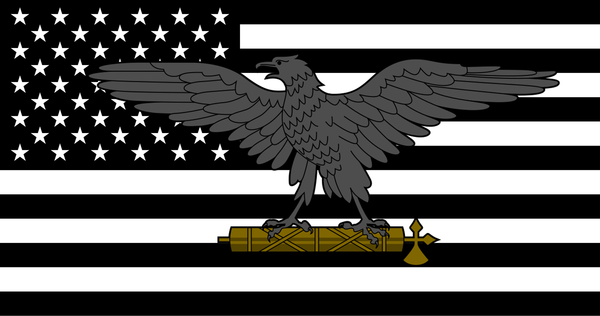Eugenics and Contraceptives in Puerto Rico: A History of Manipulation and Unethical Experimentation

We live in a time when more access to contraceptives means that people have more of a say over their bodies. For women who were of childbearing age in Puerto Rico during the years of 1937–1960, the opposite was true. These women were manipulated by their health care workers into believing that they had access to safe and reversible birth control. Instead, they received dangerous experimental birth control pills and permanent sterilization surgeries. This mistreatment was a consequence of the popularity of American eugenics, unethical human experimentation standards, and colonial disenfranchisement of Puerto Rico’s economy that defined the Puerto Rican history of the 20th century.
The rise of political support for the science of eugenics in the early 20th century resulted in state-mandated sterilization being protected by law, with 32 states establishing eugenics boards to oversee compulsory sterilization in the peak of the eugenics era. In 1937, the US imposed Law 116 onto Puerto Rico, a law that legalized sterilization on the island under the belief that Puerto Rico was too overpopulated to have a stable economy and the only way to lower the staggering unemployment rate was to decrease the population density. Puerto Rico’s economic collapse was a result of the US invasion of the island in 1898 when “the U.S. disrupted Puerto Rico’s coffee industry, implementing a sugar economy and creating massive poverty among the population.” A few decades after the US took over the island, “70% of the Puerto Rican population was landless with 2% of the population owning 80% of the land.”
The law federally subsidized the procedure for both sexes, though most cases of sterilization were on women. Some cases of sterilization were fully mandated by the Puerto Rican Eugenics Board, which ordered 97 sterilizations throughout its existence. One figure who contributed to the increase in sterilization was Clarence Gamble, heir to the Procter & Gamble company. He was President of the Pennsylvania Birth Control Federation and a correspondent and colleague with Margaret Sanger. Gamble began bringing Puerto Rican doctors to New York to be trained in sterilization techniques in 1939. Most sterilizations were not mandated in the technical sense of the word, but they were far from truly voluntary. For instance, the US government institutionally supported the spread of sterilization on the island by having health workers perform door-to-door visits, subsidizing the procedure, and by industrial employers on the island favoring sterilized women in their hiring process.
When doctors prepared to sterilize a patient, they usually didn’t ask for consent, and when they did it hardly met the criteria for informed consent that doctors are required to give patients today. Coercion tactics were common on the island. For instance, “many hospitals would not accept healthy pregnant women for delivery unless they agreed to be sterilized afterward.” This means that women would need to give full consent to the procedure right before they were going to give birth, and if they didn’t they wouldn’t be able to give birth in the safety of a hospital.
Usually, women who underwent this procedure “were not told that sterilization was a permanent form of birth control and misled about the ability to reverse it later on.” Results of a 1968 study confirmed this and showed that over one third of Puerto Rican women did not know that sterilization through tubal ligation was permanent. Because it is sometimes referred to as “getting your tubes tied,” women commonly thought the procedure was reversible. So even when the circumstances were less coercive than those described above, many Puerto Rican women did not give informed consent when they agreed to permanent birth control procedures. Of the sterilizations that occurred between 1954–1982, 21% of women reported somewhat regretting having been sterilized and 11% reported definitely regretting it. Some reasons reported for their response included that “they were under age 25 at the time of the operation, having no daughters, husband or physician having decided on sterilization, sterilization failure, and living with a new partner.”
By the 1950s, awareness of sterilization spread among Puerto Rican women, even becoming known simply as “la operación” or “the operation.” During that same time, Gregory Pincus, a biologist who specialized in mammal reproduction, with the help of John Rock, an obstetrician, began developing hormonal birth control. In 1955, they went to Puerto Rico and began to experiment with hormonal birth control on the first human test subjects. Gamble, who years prior supported widespread sterilization on the island, supported Pincus and Rock by expanding “the distribution of oral progesterone, accepting donations from pharmaceutical companies who, unable to conduct trials in the US, bid for access to the women in his clinics.”
The birth control pill’s first clinical trials took place in Puerto Rico on poor women who were never informed they were part of a study. While “educated women didn’t want to try the new medication, fearing side effects, women from lower classes with less access to health education “were desperate to avoid both pregnancy and sterilization” and unknowingly became test subjects. While the pill was nearly 100 percent effective, it contained significantly higher doses of hormones than birth control pills today. Women sometimes experienced serious and life-threatening side effects like nausea, blood clots, and depression. Doctors usually dismissed these concerns as minor or unrelated to the drug. After another round of testing which took place partly in the mainland, the drug was approved in 1957 under the name Enovid. Despite having dangerous side effects, the pill became popular among women all across the country.
In 1960, as a result of Catholics and nationalists from the island speaking out against the practice, the law that legalized and subsidized the sterilization of Puerto Rican women was repealed. In later years, society began to reflect on the horrific consequences of eugenics on the lives of those affected. In 1982 Ana Maria Garcia directed a 40-minute documentary called La operación, which brought light to the impact of forced sterilization on Puerto Rico’s society. Additionally, in 1984 The New Yorker published a 4-part series on the topic.
Forced sterilization was not isolated to the island but also occurred in the U.S. mainland as well. In 1907 a public policy gave the government the right to sterilize people without their knowledge or consent. Some groups who were particularly vulnerable in the states are people with disabilities who were considered “dependent,” “insane,” or “feeble-minded,” racial minorities like American Indians and black women, and even incarcerated women.
Even with the cases of forced sterilization on the mainland, evidence shows that the practice was far more common on the island’s population. A survey from 1965 showed that one third of Puerto Rican mothers, ages 20–49, were sterilized. Compared to women in the United States, Puerto Rican women were 10 times more likely to be sterilized. Despite the fact that women on the mainland were vulnerable to forced sterilization, the procedure was far more heavily promoted on the island. This, combined with the fact that the population of Puerto Rico had a higher percentage of economically disadvantaged people at the time in comparison to the US population, resulted in this stark difference in the number of sterilizations between the US and Puerto Rico.
The manipulation of reproductive rights to this degree is not a thing of the past. Many of us are aware that women today face barriers in making decisions about their reproductive choices, but few are aware of the history of forced sterilization in Puerto Rico and the mainland. While most laws surrounding sterilization in the US were repealed by the 1970s, cases of forced sterilization may have occurred as recently as 2013. A California audit of a female prison revealed that “of the 144 tubal ligations performed on inmates from fiscal years 2005–06 to 2012–13, auditors found, more than a quarter—39—were done without lawful consent” (source). The actual number of cases that were done without lawful consent can actually be higher than this.
The history of the progression of women’s reproductive rights in the US is even messier than most of us believe. The unjust and disturbing way that women have been denied freedom over their own bodies throughout history should inspire us to protect our reproductive rights today.
Featured Image is Antiguo Hospital Militar




